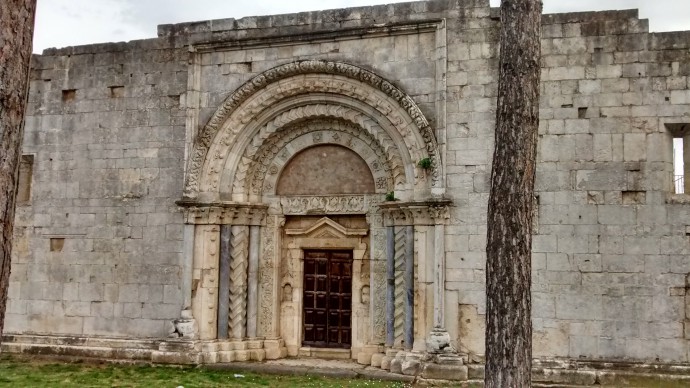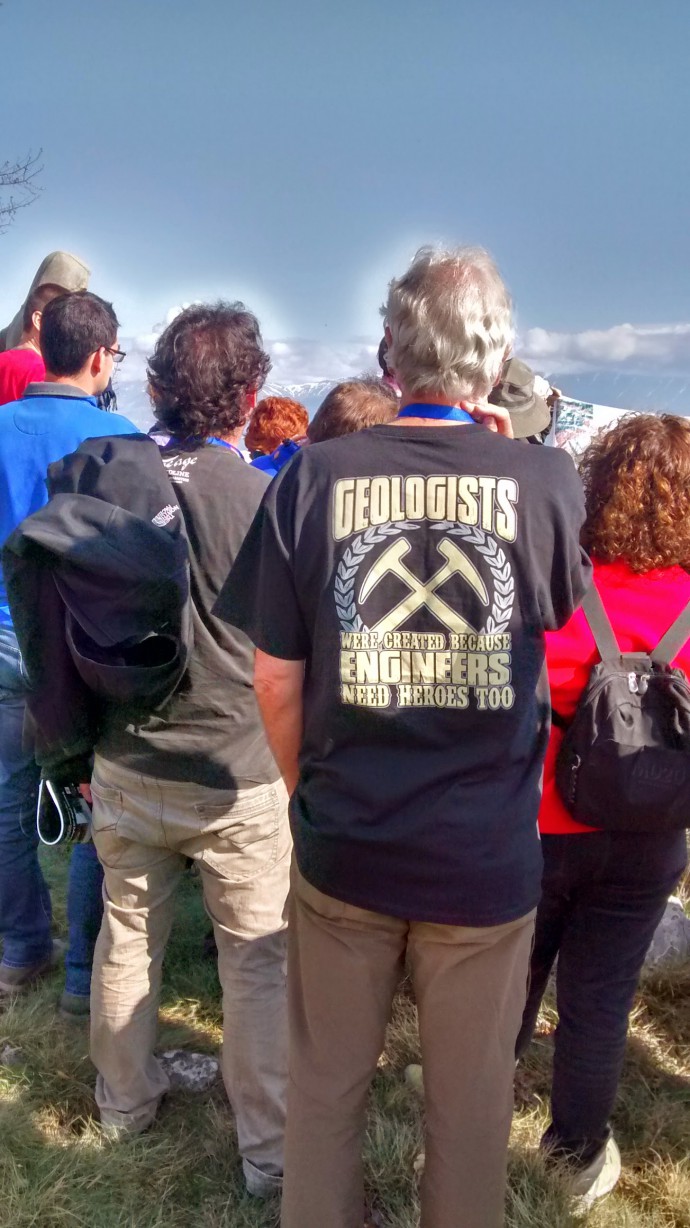I blogged about the scientific sessions at the Fucino15 meeting last week, here’s my report about the pre- and post-meeting field trips. The pre-meeting field trip was held in Rome, where we explored the archaeological and historical evidence for earthquake damage in the Eternal City. After the conference we followed the traces of the 1915 Fucino earthquake and then finally visited L’Aquila. This blog covers Rome and the geological field trips, a special on L’Aquila will follow later.
You can download the field trips guides here:
Pre-congress field trip to Rome (PDF, 6 MB)
Post-congress field trip to Fucino Basin, L’Aquila (PDF, 75 MB)

The Fucino Basin
Rome
We went on a long hike in Rome, visiting many of the ancient monuments like the Colosseum, the temples, the Pantheon, Trajan’s column etc. The city has experienced several damaging earthquakes in its long history. Historical sources do document the earthquake impact fairly well. Today, the building damage is hard to be identified – intense restoration works took place during the centuries and the masons and carpenters didn’t always care much about archaeoseismologists’ preferences. The Colosseum is a nice example with its beautiful ‘frozen archaeoseismological features’, see image below…

‘Frozen archaeoseismology’, with some artistic interpretation maybe…
In a guidebook that Miklós Kázmér showed me this feature is described as follows: “Using the insight of the ‘stopped-image’ of a simulated collapse, Raffaele Stern succeeded in freezing history, inaugurating the major period of restoration in Rome”. That illustrates the problem very well…
Fucino Basin
The first post-meeting field trip led us to the active faults of the Fucino basin and focussed on geomorphology and paleoseismology. Here is a file with the coordinates of the stops (GoogleEarth kmz).

The Fucino15 field trip stops
Stop 1, Avezzano

Avezzano was flattened by the 1915 earthquake, note the beautiful seismic landscape.
Stop 2, Magnola Fault

Panorama view of the Magnola Fault, trench and 36Cl sampling site.
Stop 3, Cerchio-Collarmele tectonic terraces

Cerchio-Collarmele tectonic terraces and the Cerchio-Pescina Fault
Stop 4, The Serrone Fault escarpment

Gerald Roberts in front of the Serrone fault escarpment
Stop 5, 1915 earthquake surface ruptures & scarp, Venere quarries

1915 rupture (cumulative scarp!).

Fault plane crops out in the Venere quarry, trench site.

There’s the fault plane!
Stop 6, San Benedetto dei Marsi

San Benedetto dei Marsi – damage from 1915

San Benedetto dei Marsi – the Madonna statues mark the ancient Fucino lake shore
Stop 7, 1915 coseismic rupture in the lake sediments

Subtle geomorphological hint – fault trace in the foreground

The trench that was exclusively opened for us by Paolo Galli

Intense discussion, as at every trench site where more than one paleoseismologist is present.
Stop 8, the hotel on a fault

There’s a fault running beneath our hotel…
Stop 9, L’Aquila basin panorama

Gran Sasso range with L’Aquila in the basin

no comment
Stop 10, Quaternary composite fault scarps and paleoseismological investigations

Trench site for the L’Aquila seismic source, Paganica
Site 11, Poggio Picenze – tilted Early Pleistocene lacustrine deposits and Gilbert fan delta conglomerates

Poggio Picenze – Early Pleistocene lacustrine deposits
Stop 12, Valle dell’Inferno geomorphology

Valle dell’Inferno



No Comments
No comments yet.